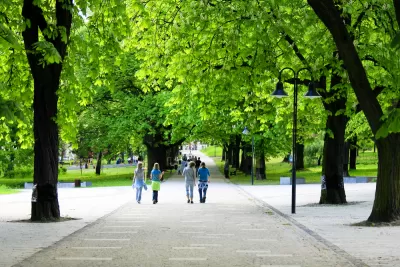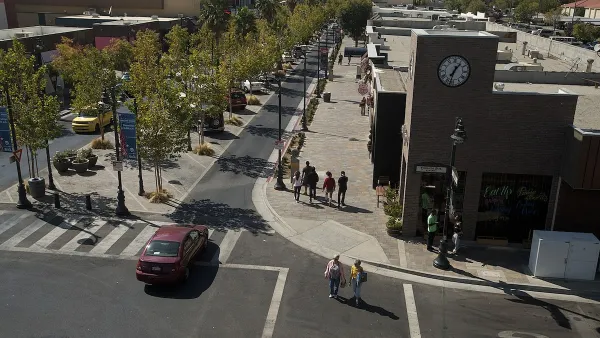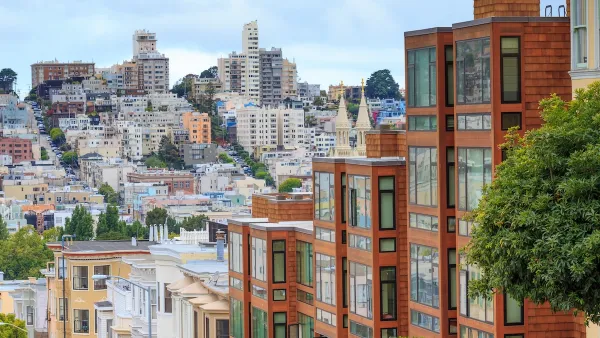The healthiest neighborhoods are both walkable and green, according to a growing body of evidence.

Kaid Benfield puts out a call to action better connect place to health. According to Benfield, the formula for success in bringing better health outcomes to communities is simple: nature and walkability.
According to Benfield, "there is compelling new research, from a variety of medical and other scientific sources, about what makes a neighborhood healthy." While walkability has long been an urban design feature sought by urban designers and other advocates for smart growth, another piece is necessary to deliver the most health benefits. "To be truly healthy, especially in cities, we also need nature in our communities," explains Benfield.
The article sets context with past research public health outcomes connected to the environment, like obesity and asthma. There are a few potentially surprising environmental conditions with a direct connection to public health outcomes, like noise pollution. One of the new studies shared by Benfield offers a "meta-analysis of urban and rural differences in mental health, finding "the incidence of mood disorders (mostly depression) was 39 percent higher and the incidence of anxiety disorders was 21 percent higher in cities than in rural areas."
Belfield doesn't present this information to present urban living in a negative light. Rather, he writes, "city environments can also be very supportive of health if we get the neighborhoods right." The article goes on to share studies that delve into the characteristics of walkability and urban nature than can deliver the most benefit top public health outcomes. There's a ton of research and information here.
FULL STORY: The Science Is In: The healthiest neighborhoods are both walkable and green

Maui's Vacation Rental Debate Turns Ugly
Verbal attacks, misinformation campaigns and fistfights plague a high-stakes debate to convert thousands of vacation rentals into long-term housing.

Planetizen Federal Action Tracker
A weekly monitor of how Trump’s orders and actions are impacting planners and planning in America.

In Urban Planning, AI Prompting Could be the New Design Thinking
Creativity has long been key to great urban design. What if we see AI as our new creative partner?

King County Supportive Housing Program Offers Hope for Unhoused Residents
The county is taking a ‘Housing First’ approach that prioritizes getting people into housing, then offering wraparound supportive services.

Researchers Use AI to Get Clearer Picture of US Housing
Analysts are using artificial intelligence to supercharge their research by allowing them to comb through data faster. Though these AI tools can be error prone, they save time and housing researchers are optimistic about the future.

Making Shared Micromobility More Inclusive
Cities and shared mobility system operators can do more to include people with disabilities in planning and operations, per a new report.
Urban Design for Planners 1: Software Tools
This six-course series explores essential urban design concepts using open source software and equips planners with the tools they need to participate fully in the urban design process.
Planning for Universal Design
Learn the tools for implementing Universal Design in planning regulations.
planning NEXT
Appalachian Highlands Housing Partners
Mpact (founded as Rail~Volution)
City of Camden Redevelopment Agency
City of Astoria
City of Portland
City of Laramie





























